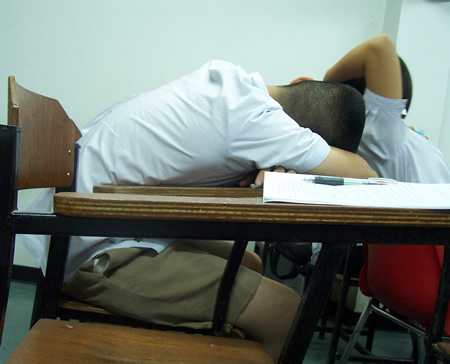Dropout Factories Decline

The number of U.S. schools with such poor graduation rates that they are known as “dropout factories” fell by 6.4 percent between 2008 and 2009, according to a report released at the Building a Grad Nation Summit that opened in Washington, D.C., March 22. According to Education Week blogger Caralee Adams, the report, found that in 2009, there were 1,634 schools with graduation rates at or below 60 percent–112 fewer than the previous year. That represents an 183,701 decrease in the number of students attending these poor performing schools.
Overall, the number of students attending dropout factories has declined from 2.6 million in 2002 to 2.1 million in 2009, nearly a 20 percent improvement.
Looking at the state-by-state picture, 18 states had a decline of three or more dropout factories, 23 essentially stayed the same, and nine had increases of three or more. Rural districts saw the sharpest reduction, at 15.5 percent, with city systems experiencing the slowest decline of 3.4 percent. State profiles are available from the Everyone Graduates Center at Johns Hopkins University. The Alliance for Excellent Education’s search engine helps identify the lowest performing high schools by state, district, or ZIP code.
The report includes recommendations to help ensure the nation reaches a 90 percent high school graduation rate by the class of 2020–today’s third graders. They include:
- Develop high standards to graduate all students college- or career-ready.
- Focus investment on the lowest-performing middle and high schools though expansion of federal School Improvement Grants and greater emphasis on secondary schools in existing federal programs.
- Hold states, districts, and schools accountable for graduating all students from high school.
- Shift away from a one-size-fits-all school improvement system to one with flexibility and data-driven decision-making.
- Address the factors that influence student achievement with wraparound services.
- Provide federal support for district, community, and statewide efforts to raise high school graduation rates.
- Strengthen schools by funding national-service efforts, such as the Education Corps.
To improve even more, Robert Balfanz, co-director of the Everyone Graduates Center, suggested local entities use new comparison data on graduation rates to shape targeted efforts, follow students over time with longitudinal data to see how their high school success is linked to their post-secondary success, and look at case studies of schools that have turned around their graduation rates using enhanced student supports and early-warning systems.
John Bridgeland, president and chief executive officer of Civic Enterprises, cited the need for early-warning and intervention systems–typically instituted for high school freshmen–as early as 4th or 5th grade. The Civic Marshall Plan establishes practical benchmarks along the way to track and support students making significant transitions. He also suggested states should raise the compulsory age that students are allowed to drop out.
Bridgeland pledged to a Grad Nation annual update to show progress in meeting the benchmarks, state by state, in improving graduation rates. “We want to stay accountable,” he said. “We want this to be grounded in reality.”
Filed under: K-12 Education News
Tags: Education Policy, Outreach for Schools, Public Policy, Research on Learning








